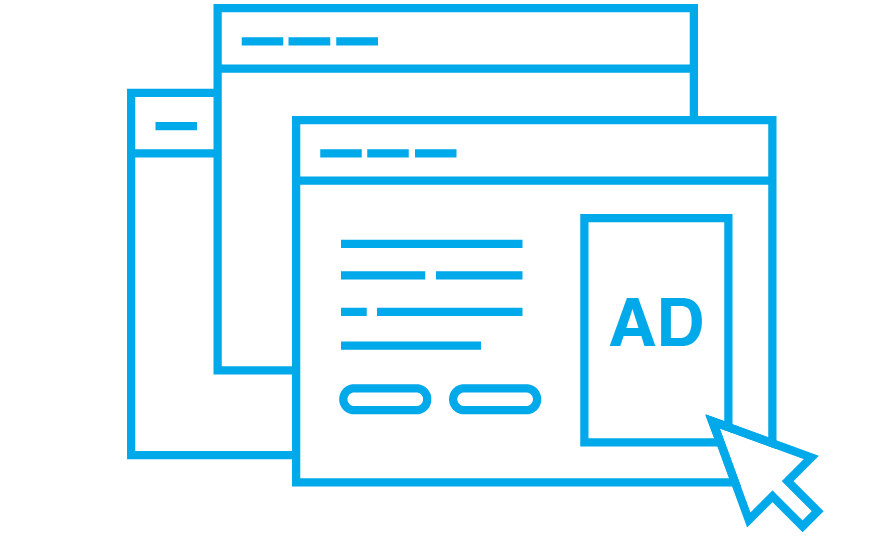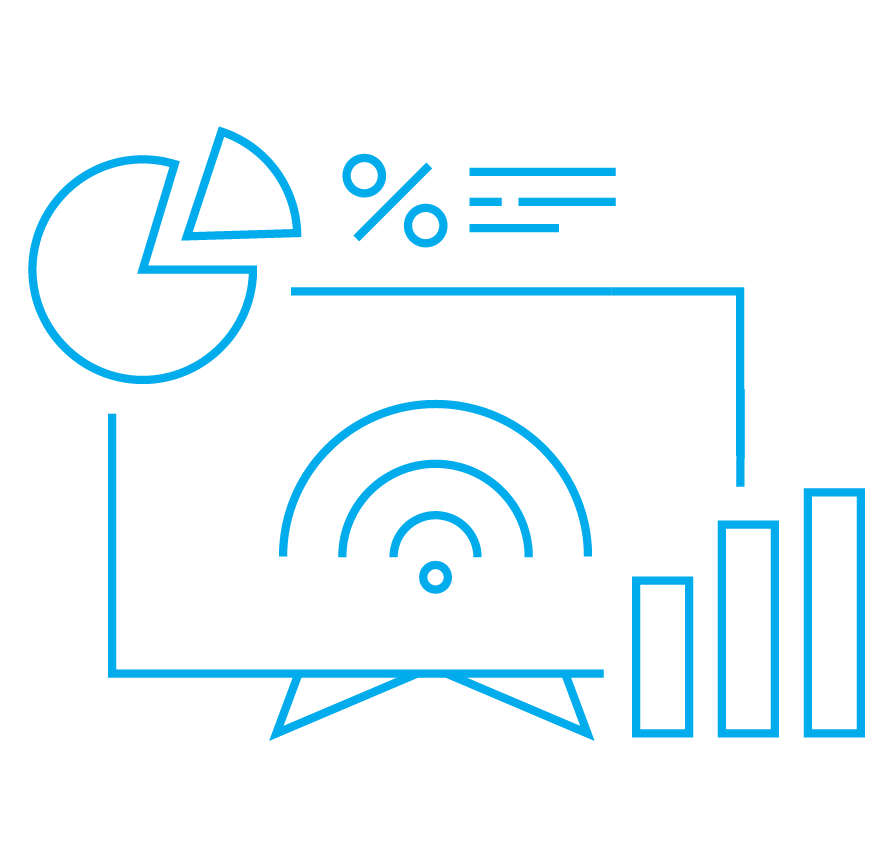- What do cookies do?
- What are 1st and 3rd party cookies?
- Why will 3rd party cookies be blocked in the Chrome browser?
- Using 3rd party cookies and privacy regulations
- How can marketers prepare for a cookieless future?
- 3rd party cookies alternatives
- Cookieless advertising - how do we do it in OnAudience?
The Adtech market is faced with a new era – a cookieless future. Today, 86% of US marketers rely on 3rd party cookies to gain information about user behaviour. In the second half of 2024, marketers will be deprived of this opportunity. Therefore, a discussion about new alternatives to popular cookies has already started. Marketers are already using technology that replaces 3rd party cookies. However, it remains to be seen which technology will dominate the market and how the market will shape up after the complete withdrawal of 3rd party cookies.
Find out what alternatives are already available and how you can prepare for a cookieless future.
What do cookies do?
Although Firefox and Safari got rid of 3rd party cookies back in 2017 they were still the most common types of user data. Cookies are small files that are saved and stored on your computer or any device that has an Internet connection. Therefore, a cookie contains 3 basic pieces of information:
- information about the site from which the file was obtained,
- cookie lifetime – how long the file will be stored on your device,
- a randomly generated unique number that is assigned to identify the connection from which the file was generated .
Their use is so widespread that it has already passed into everyday life. Thanks to them the browser remembers the language version of the website we are using or remembers our shopping cart.
What are 1st and 3rd party cookies?
What is worth mentioning, is that cookies are just transmitters of information and their basic function can be replaced by other technology. As a result, the upcoming changes will involve only the withdrawal of 3rd party cookies in Chrome. Other types of cookies – 1st and 2nd – will be continuously in use. However, there are slight differences between these types:
First-party cookies are stored by the domain (website) that the user visits. The first-party data can include information as follows:
- demography,
- visited websites & interactions,
- purchase history,
- interests,
- time spent on the website.
Third-party cookies are created by a domain other than the one the user is visiting. These cookies are used to:
- monitoring user behavior on different sites,
- Retargeting,
- Show ads to specific groups of users.
To find detailed characteristics of each type of cookie, check our previous blogspot.
Why will 3rd party cookies be blocked in the Chrome browser?
Google has decided to phase out 3rd party cookies in the second half of 2024. Why has this step been decided?
The trend of protecting personal information has become increasingly strong. People began to pay attention to how their data was being used. As a result, governments decided to introduce regulations to systematize the exchange of data between recipients and advertisers. Therefore, publishers were forced to update their adopted solutions.
FLoC
Firstly, Alphabet intended to replace the current cookies with a FLoC (Federated Learning of Cohorts) solution. This type of website tracking uses machine learning techniques, which gives the ability to group people based on their browsing history.
This would make displaying personalized ads more effective and easier. However, the solution did not meet the approval of the industry. While testing the FloC technology, its shortcomings came to light. The solution could use fingerprints and had no safeguards against targeting sensitive categories. These shortcomings led Google to abandon FLoC and introduce Topics as a proposed response to interest-based advertising.
Topics API
Topics is Google’s proposed privacy-friendly replacement for third-party cookies. It is a browser-based system that assigns a user a set of interests based on the sites they visit. In this solution, the mechanism is to match the top 5 topics that have appeared most frequently to the user in the last 3 weeks based on the browser history. Unlike FLoC, Topics helps avoid targeting users based on sensitive categories such as a person’s race, sexual orientation, or religion. The possible categories of topics are public. Additionally, the user will be able to access and manage the list of topics to which they are assigned.
This action is a part of a broader initiative – “Privacy Sandbox”. According to Google’s plans, Privacy Sandbox should become a universal set of solutions usable by any entity operating online. The section will be expanded as more universal solutions are implemented in the browser, aimed at anonymizing Internet users while offering effective directional advertising mechanisms.
Currently, the Topics solution is in a test phase, but all indications are that Google has not yet said its last word. The situation will continue to evolve until the end of 2023, so new solutions are still to come.
Using 3rd party cookies and privacy regulations
The topic of user privacy online is becoming increasingly popular. We strive to protect the data and expect data warehouses and distributors to use it lawfully.
Legal authorities have introduced several regulations aimed at protecting consumers’ data. One of the most major regulations is GDPR – in Europe, and CCPA in the US.
Due to the growth of the personalized and digital advertising market, Big Tech companies introduced new solutions in the name of protecting users’ privacy, such as Apple’s App Tracking Transparency. The mechanism should give users control over who uses information about their online activities and where.
New solutions will emerge dynamically for sure by the 2024. The tech giants will continue to work on improving privacy. Increasingly, audiences are demanding specific solutions to ensure the best possible privacy protection. As a result, advertisers will have to come up with a solution that provides adequate data protection but at the same time enables precise targeting of ads.
How can marketers prepare for a cookieless future?
For years, the market has been changing dynamically, it is an inevitable cycle of development. Marketers must adapt to changes even before they take effect. Therefore, in the face of the withdrawal of 3rd party cookies, companies present new alternatives.
Let’s take a look at solutions that are alternatives for 3rd party cookies:
1. ID Graph
When a user visits the same portal on different devices, e.g. from a phone and a computer, the system treats us as two different users. To reliably target recipients we need to obtain a full picture of their online activity on each device. ID Graph gives us such a possibility. Cross-device technology is based on identifying different devices belonging to the same user. Its essence is the so-called graph, which can be a set of related devices.
To achieve precise results and get as many matches as possible, you can apply machine learning. Cookies can be used to find a connection between mobile IDs as well as public IDs. So users can be found based on their cookies and then targeted using e.g. MAIDs.
2. Public IDs
An ID is a single identifier that is created by an independent advertising technology company to provide a common identity to approved partners throughout the supply chain. So, the solution is based on the use of encrypted user information. It is an alternative to 3rd party cookies, which is already used on the advertising market.
There are many Public IDs on the market now, we can mention the most popular here: Unified ID 2.0, Identity Link or Panorama ID. To learn more about them, check our article with post cookies advertising alternatives .
3. Use your 1st party resources
It makes sense to focus on the data we have at our fingertips – 1st party. First party data is the information that companies can collect from their sources. In other words, all information about customers from both online and offline sources, such as the company’s website, app, CRM, social media or surveys is first-party data. It is worth analyzing this data and using it in campaigns in the form of segments. What is more, our DMP gives an opportunity to manage 1st party data to target audiences.
To get a full view of customers it is worth enriching the 1st party data with data from external providers. Then we learn more about the user than the behavior on our website indicates. You can enrich your data with raw data about online users’ behaviour. Check how you can use a Raw Data to do it efficiently.
4. Mobile Ad ID – MAID
While desktop advertising is based on cookies, mobile advertising relies on Mobile Advertising IDs. For this reason, it is a solution you cannot overlook when building an advertising campaign. With this solution, you can easily track mobile users, because they have a unique number assigned to their mobile devices. To get the most information out of your data, get a reliable data provider.
3rd party cookies alternatives
Alternatives to 3rd party cookies are appearing more and more every day. However, it is worth learning a few basic rules on how to properly adjust the solution to your needs. While we can’t predict what the future will look like without 3rd party cookies, there are a few ground rules worth following.
Check out how you can prepare for this change today:
- Use omnichannel advertising
- Be transparent and pro-user in your actions
- Get the most out of the data you already have (1st party data enriched with 3rd party)
- Test and verify the best partners for your digital activities
- Explore a new suite of addressability solutions
However, those are just the ground rules for the nearest future. There are way more options for what marketers are going to do in the post cookies era. We’ve put together a summary of alternatives you can use today. You can find them here.
Cookieless advertising – how do we do it in OnAudience?
As one of the largest data providers, the matter of strategic importance for us is users’ privacy and delivering high-quality data to our partners. We carefully analyze the digital market and we are prepared for the cookieless future. In other words, we provide solutions for cookieless targeting – such as our proprietary Cross-Device ID – Graph.
- We deliver mobile data for targeting, based not on cookies, but MAIDs.
- Our database includes Public IDs – alternative identifiers for cookies.
We can adapt to new user IDs, using our elastic, proprietary DMP platform. With the cookieless design of our DMP, you can base it not only on cookies but also on different IDs. - Our Data Stream can be used to model bases from URLs. With the help of Data Stream contextual targeting will be available also based on URLs. It helps you become independent with your targeting and gives new possibilities.
Even though the ad tech market took proper steps toward a cookieless future there is still a lot to discover. Many solutions will be introduced in the future which is why the final image of the market is not clear yet. Certainly, advertisers should look for a 3rd party cookie substitute today. With the given opportunities, we can develop an effective strategy for the upcoming time.



